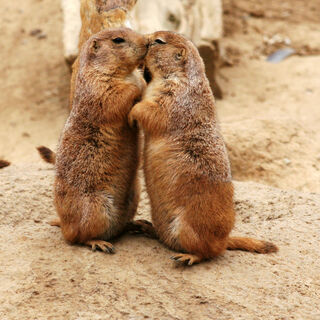Sex
Loving Someone Without Sexual Desire
Research demonstrates that sexual and romantic desire are not necessarily linked
Posted August 19, 2020 Reviewed by Gary Drevitch

A sexologist argued a decade ago that “sexual interest is necessary for the development of romantic feelings." Many appear to agree.
By contrast, if he had argued the reverse—that romantic feelings are necessary for the development of sexual desire and behavior—no one would have believed him. Although counterevidence for the latter is readily available and pervasive, as illustrated by episodes of anonymous, transactional, or self-serving sex, is there evidence that romantic feelings flourish without sexual desire? Granted that having romantic feelings for someone does not always net having sex with that person, is it possible for one to have romantic feelings, either passionate, such as an intense but brief crush/infatuation, or companionate, such as a prolonged loving attachment, in the absence of sexual desire? To find out, one should not turn to the research literature because this question seldom garners scientific inquiry.
Romantic Asexuals vs. Aromantic Asexuals
An exception is recent research by Amy Antonsen and colleagues who combined data from seven previous studies to net over four thousand asexual participants. Nearly 75% of the asexual individuals reported having romantic attractions for others without having sexual desires for them. These romantic asexuals did not differ from aromantic asexuals in being female or male. More of the romantic asexuals were bi-romantic in their romantic orientation than either hetero-romantic or homo-romantic. Only about one third reported a hetero-romantic orientation, far less than the general population of sexual individuals, which usually varies from 80% to 90% of the total. As expected, romantic asexuals were more likely to have been in a romantic relationship and to have a slightly higher (but very low) degree of sexual desires and number of sex partners. As individuals they were more nurturant in their personality but did not differ from asexual aromantics in their “demographic characteristics, likelihood of having children, solitary sexual desire, physiological sexual functioning, frequencies of masturbation and sexual fantasy, or depression.” Thus, the case was made that romantic feelings readily occur in the absence of sexual desire.
What About Sexual Individuals?
These, however, are asexual individuals. Are they unique in the ability to have romantic feelings independent of sexual feelings? Here, the research literature falters, though many individuals might personally claim membership in a group who have romantic desires for a person without necessarily having sexual desires for that person.
I have interviewed a number of these individuals—more young men than young women because we do not expect male youths to split their sexual and romantic attractions, whereas among female youths we expect them to develop romantic but not sexual attractions with other girls. We refer to these as “passionate friendships.” A “bromance” between two males, however, is generally understood to be a non-sexual and non-romantic friendship that is, nevertheless, exceptionally affectionate, emotional, and intimate—which admittedly are the hallmarks of a romantic orientation. Homosocial bonds between two females or two males might well exceed in strength and endurance normative friendships and, in some circumstances, match or surpass heterosexual romances. By overlooking romantic influences on young lives, we limit our knowledge about how they understand their sexual and romantic identities—and what we think we know might well be distorted. We should count bromances and passionate friendships as potential indicators of a romantic orientation, which may or may not be linked with sexual orientation.
Bottom Line
Why not just call it what it is? What is so wrong with two straight, bisexual, gay, pansexual, queer, fluid, etc. identified youths being infatuated, passionate, or attached to each other without having sexual desires for each other? To lose the connection between a same-sex or other-sex pair because of culturally-induced toxic masculinity or femininity is tragic. Asexuals have shown us that it is possible. Perhaps we should just celebrate the love that has no name.
Facebook image: Rido/Shutterstock
References
Antonsen, A. N., Zdaniuk, B., Yule, M., & Brotto, L. A. (2020). Ace and Aro: Understanding differences in romantic attractions among persons identifying as asexual. Archives of Sexual Behavior, 49, 1615–1630. doi:10.1007/s10508-019-01600-1
Michael Bailey on Sexnet@listserv.it.northwestern.edu, August 13, 2010.
Savin-Williams, R. C. (2017). Mostly Straight: Sexual Fluidity Among Men. Cambridge, MA: Harvard University Press


